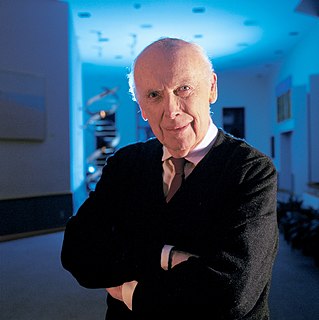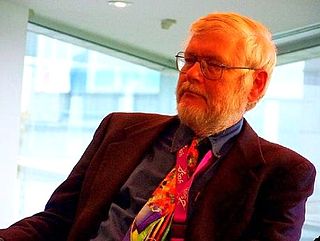A Quote by Paul McEuen
Nanotechnology is the idea that we can create devices and machines all the way down to the nanometer scale, which is a billionth of a meter, about half the width of a human DNA molecule.
Related Quotes
An idea can be tested, whereas if you have no idea, nothing can be tested and you don't understand anything. The molecule that you make when you are getting sunburned or when you eat a lot of food is part of the same molecule that contains an endorphin or an opiate. No one has ever had a hypothesis about why the two are together.
There's a book of interviews with John Cage by Joan Retallack called Musicage that was finished the summer that he died, in 1992. And in one of the last interviews, he was very excited to talk about nanotechnology. There's real technophilia from him, a kind of utopian embrace of the idea that nanotechnology will free people up to do what they really want to do.
Parasites are not only incredibly diverse; they are also incredibly successful. There are parasitic stretches of DNA in your own genes, some of which are called retrotransposons. Many of the parasitic stretches were originally viruses that entered our DNA. Most of them don't do us any harm. They just copy and insert themselves in other parts of our DNA, basically replicating themselves. Sometimes they hop into other species and replicate themselves in a new host. According to one estimate, roughly one-third to one-half of all human DNA is basically parasitic.
If you look at the economics of Nokia roughly half of the company, half of the business, half of how we think about the business is focused on those emerging markets and on those lower-priced devices. But, of course, people who are aspirational and buying those lower-priced devices today are looking at smart phones tomorrow, and so forth.
If you look at the economics of Nokia, roughly half of the company, half of the business, half of how we think about the business is focused on those emerging markets and on those lower-priced devices. But, of course, people who are aspirational and buying those lower-priced devices today are looking at smart phones tomorrow, and so forth.
The idea that human-transforming technology that mingles the dna of natural and synthetic beings and merges man with machines could somehow be used or even inspired by evil supernaturalism to foment destruction within the material world is for some people so exotic as to be inconceivable. Yet nothing should be more fundamentally clear, as students of

































